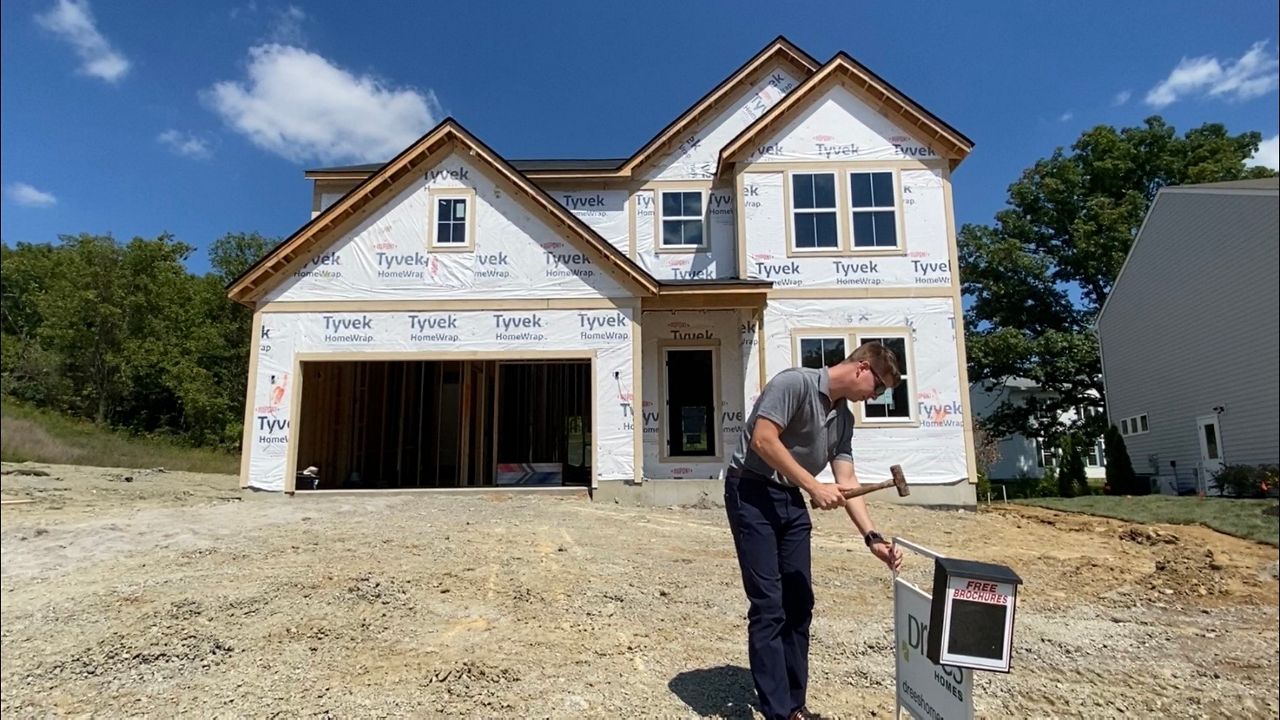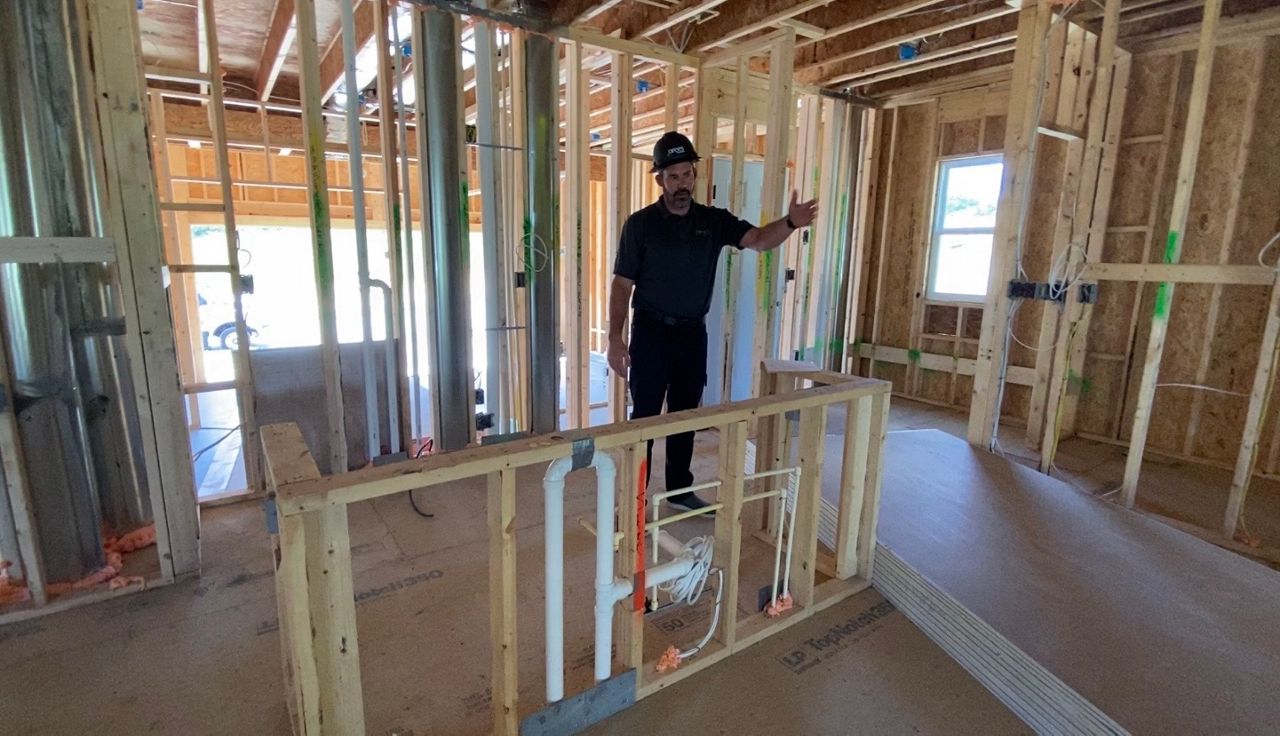INDEPENDENCE, Ky. — Though it's just a frame, for now, Ben Taylor sees a lot of potential in the first DREES home to go up in the Villages of Decoursey neighborhood.
As the division president for northern Kentucky, he said designers wanted the build to feature much of what post-pandemic buyers have said they were looking for: wide-open space for family gatherings, a quiet study for potential work from home, and most importantly, a price they could afford.
That final sticking point has been driving much of the market in the past few months, especially after the Federal Reserve raised interest rates three times so far this year, cooling what was for much of the past year and a half a red-hot housing market.
“It was the opposite of what we were expecting,” Taylor said. “Demand really picked up, and you know, I think part of that was because people were home more and they realized what they were unhappy with in their existing homes.”

Many potential buyers also had the opportunity to save for a down payment during 2020, so when shutdowns ended and buyers sought their dream homes, demand spiked.
On the supply side, builders had ample motivation to put as many homes on the market as possible, and single-family home starts, a measure of new builds, hit a 16-year high in April 2022.
Meanwhile, this momentum proved unsustainable, and in July, nationwide housing starts dropped to a 17-month low, with Cincinnati, in particular, seeing a 9% drop in new builds from 2021, according to the Home Builders Association.
A number of factors are believed to be behind the decline, including the toll inflation has taken on the cost of supplies.
“All the supply chain issues you probably heard about, rising lumber costs, all of those things have contributed to the craziness we’ve been through the last few years,” Taylor said.
Lumber in particular has seen a lot of price volatility, spiking to nearly quadruple its pre-pandemic cost at its height.

Most recently though, Taylor said the biggest challenge for the building market, is meeting buyers where they are.
“We’ve seen a taper in sales and interest level, most likely due to rising interest rates, and just the attainability of housing, whether it’s existing or new, people’s ability to afford it,” he said.
From realtors, Taylor’s hearing most buyers can’t afford anything more than $400,000, so that’s the target he said designers are hoping to hit, factoring in the costs of labor, supplies, and the current market.
“Squaring off the rear of the home to make it easier to build,” Taylor said. “Condensing the time it takes to build a home for someone who may be on a tighter time frame, all those things we factored into the design of this.”
To Taylor, the recent trends in home starts don’t spell disaster. Despite the statistics, the Village of Decoursey home was a July start, and as DREES Homes works to finish it by October, Taylor expects dozens of other homes in the planned 230-home neighborhood will get off the ground.
In his division, Taylor expects DREES to fall just short of its 350-build goal for the year, but having well surpassed it in 2021, he’s hopeful this is a sign of a stabilizing market, not a downturn.
“Coming out of July, we’re optimistic about what we’re seeing,” he said.



